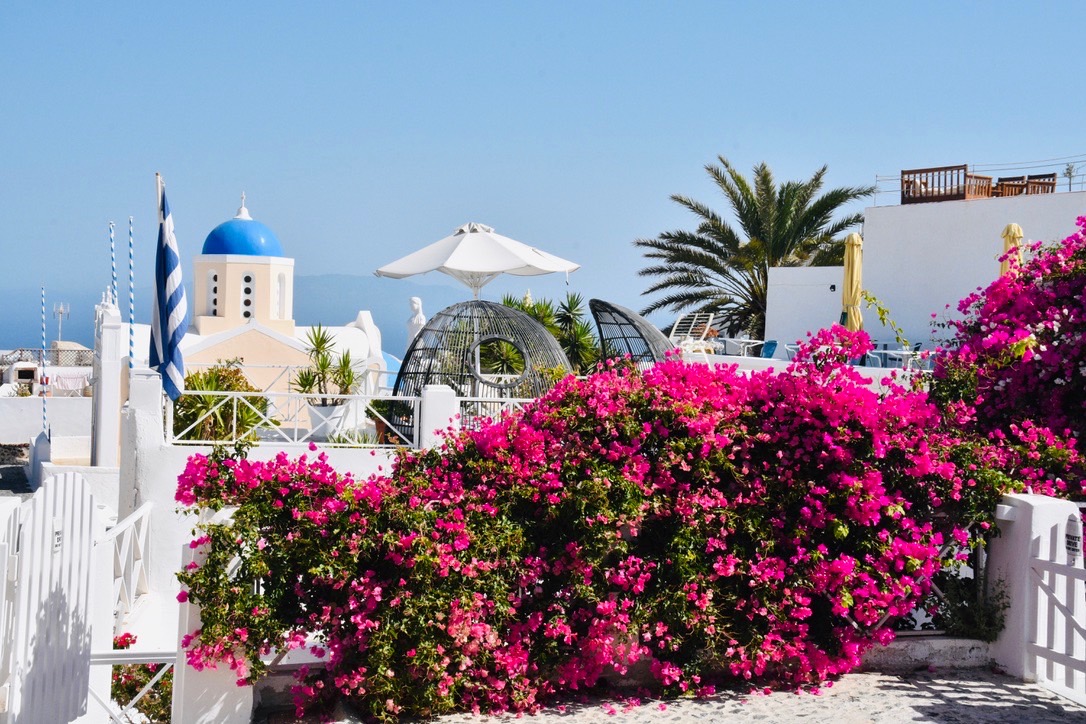Santorini, Greece has something for everyone. Whether you are looking for a low-key beach getaway or an archaeological exploration, you can do it all in Santorini. The views from the edge of the ancient volcano that has destroyed the island multiple times through the millennia are spectacular.
Yesterday, we boarded a small, propeller-driven plane and flew from Athens to the town of Fira, located on the small, volcanic island of Santorini.
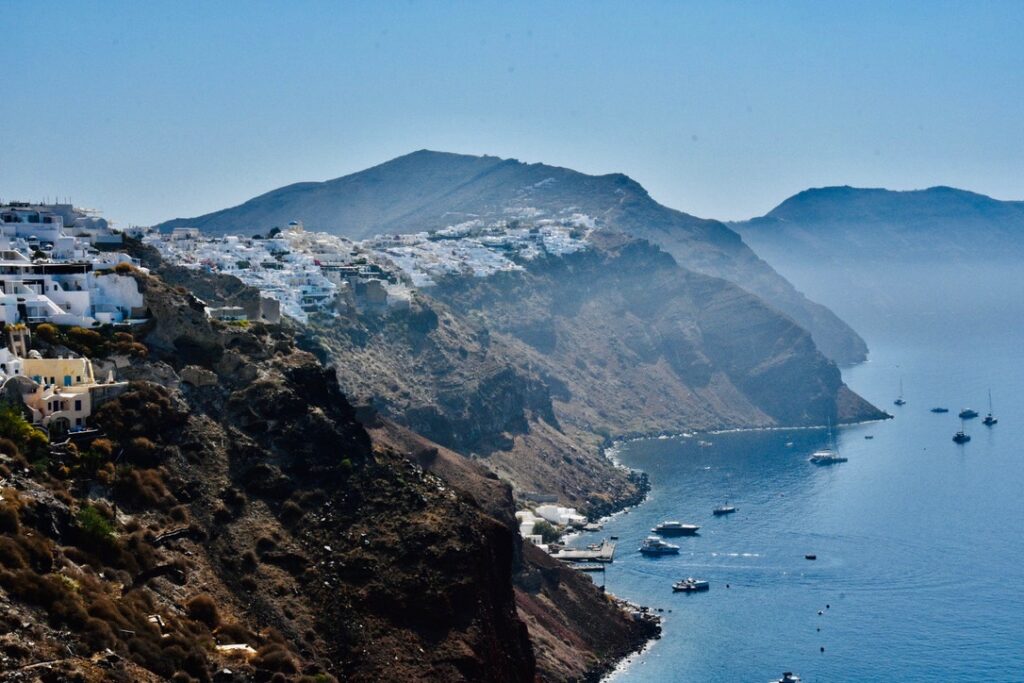
Today, our driver met us in the lobby of our hotel for a five-hour tour of the island and its main sights. Our first stop was the town of Oia, the most famous and popular settlement on the island of Santorini.
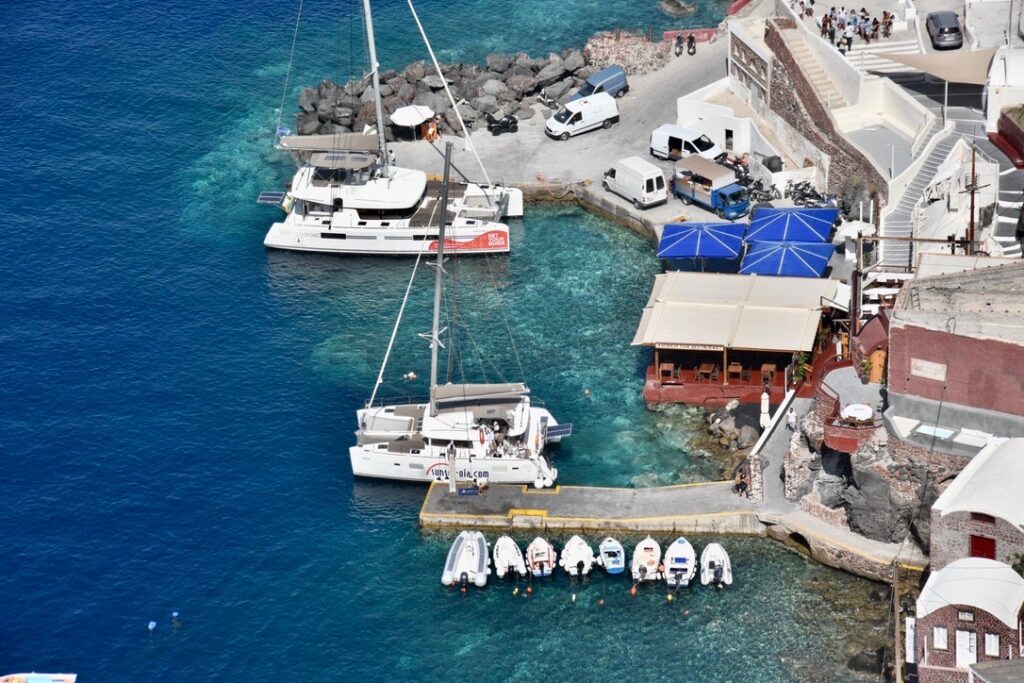
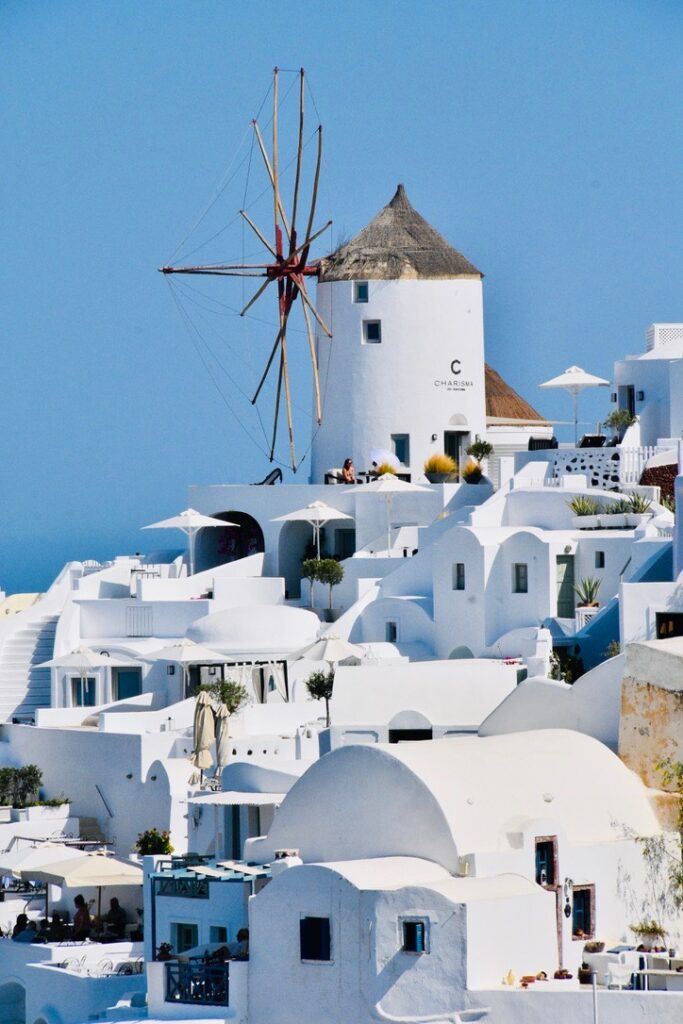
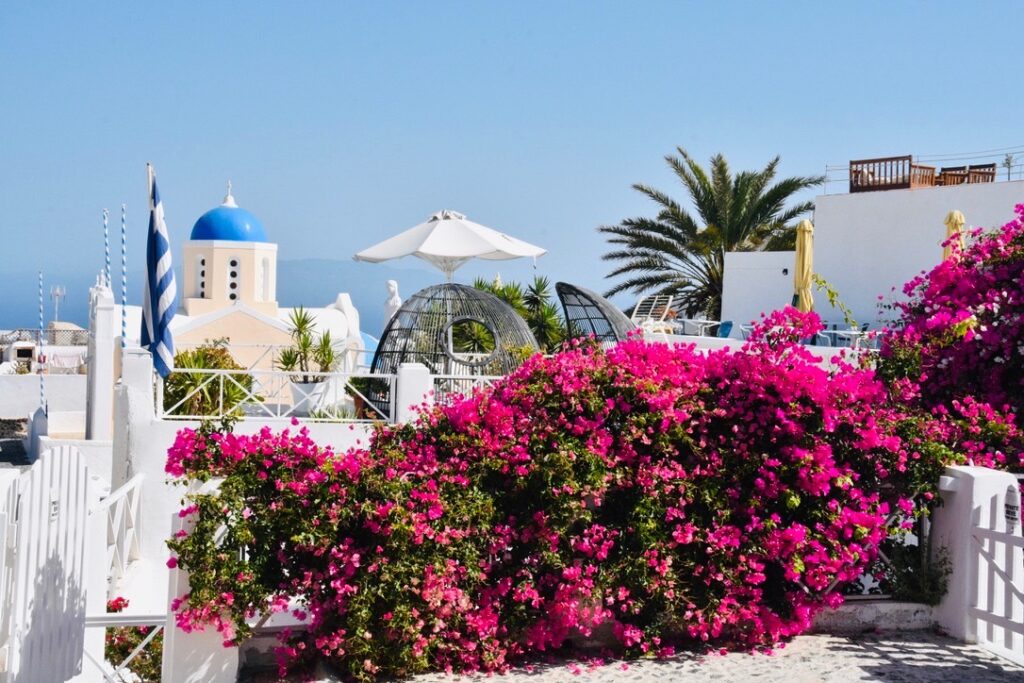
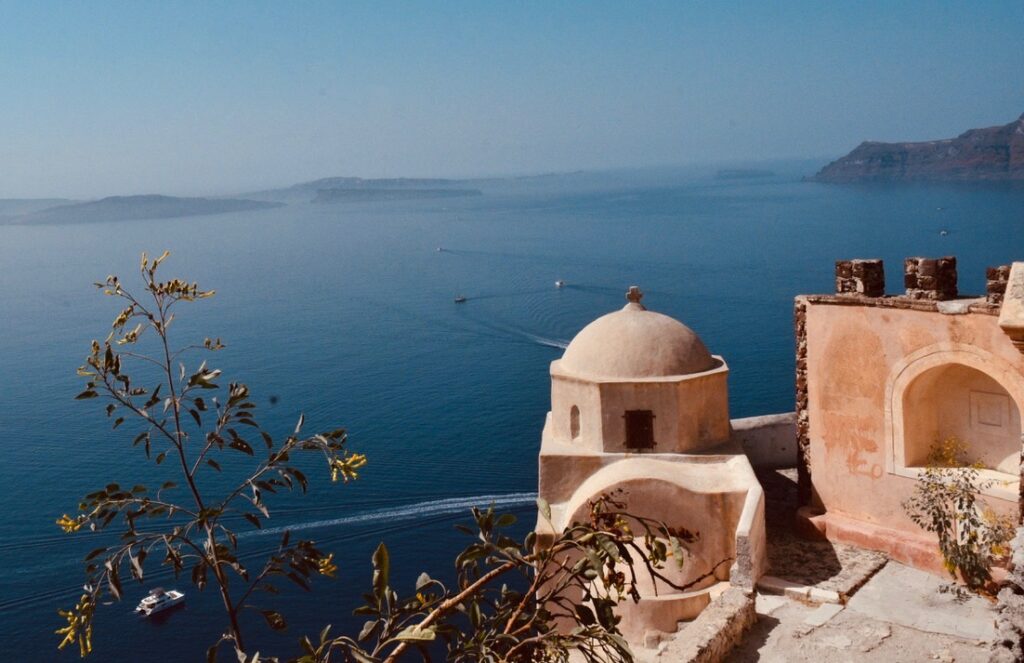
The island of Santorini (called Thira in Greek) is now a crescent shape, but it was not always so. The island was once round, with a great volcano rising at its center. A devastating eruption roughly 3,700 years ago caused the volcano to collapse and created a massive crater, which is now the crystal-blue bay that the town of Oia overlooks.
The two small islands in the center of the bay are remnants of the volcanic mountain itself.
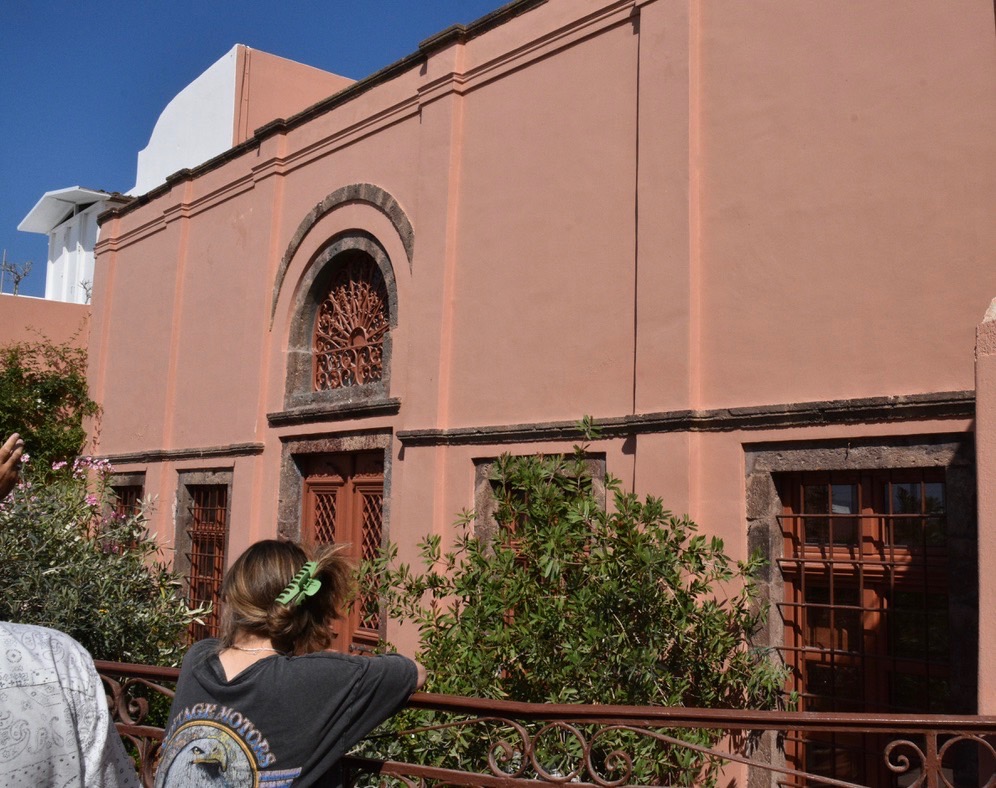
In 1956, a 7.7-magnitude earthquake— many times more powerful than the earthquake that struck Haiti in 2010— destroyed nearly all of the towns and villages on Santorini, including Oia. Nearly every building in Oia collapsed, with the exception of a few large, sturdily built houses built by wealthy merchants in the eighteenth and nineteenth centuries.
These homes, such as the one pictured above, were ornately decorated and often featured stone carvings of windmills, Orthodox crosses, and other motifs, such as the traditional Greek meander.
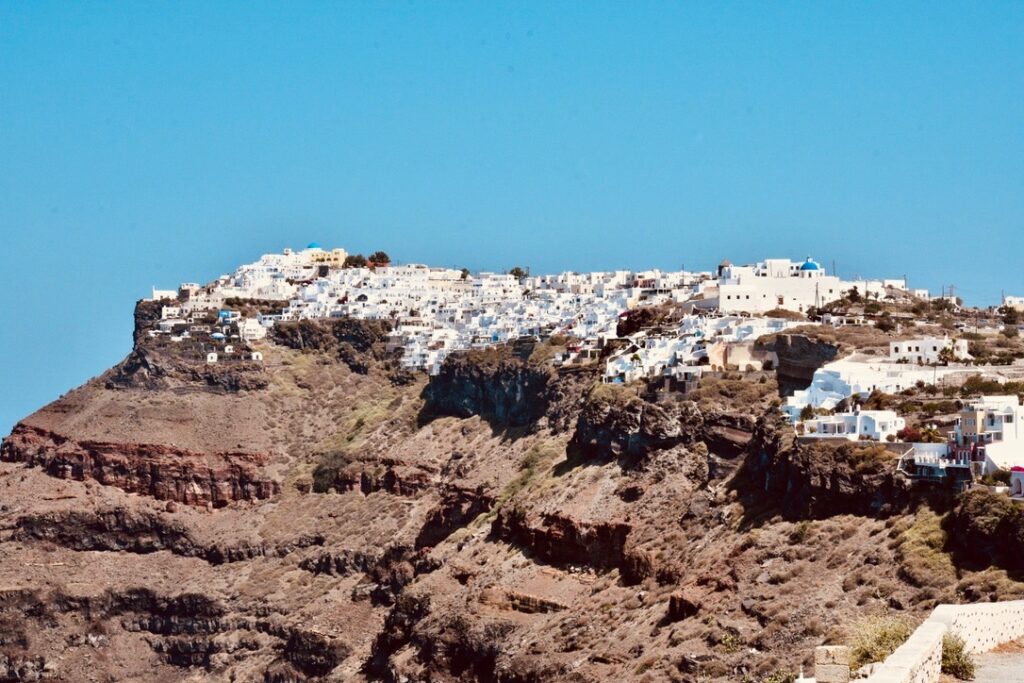
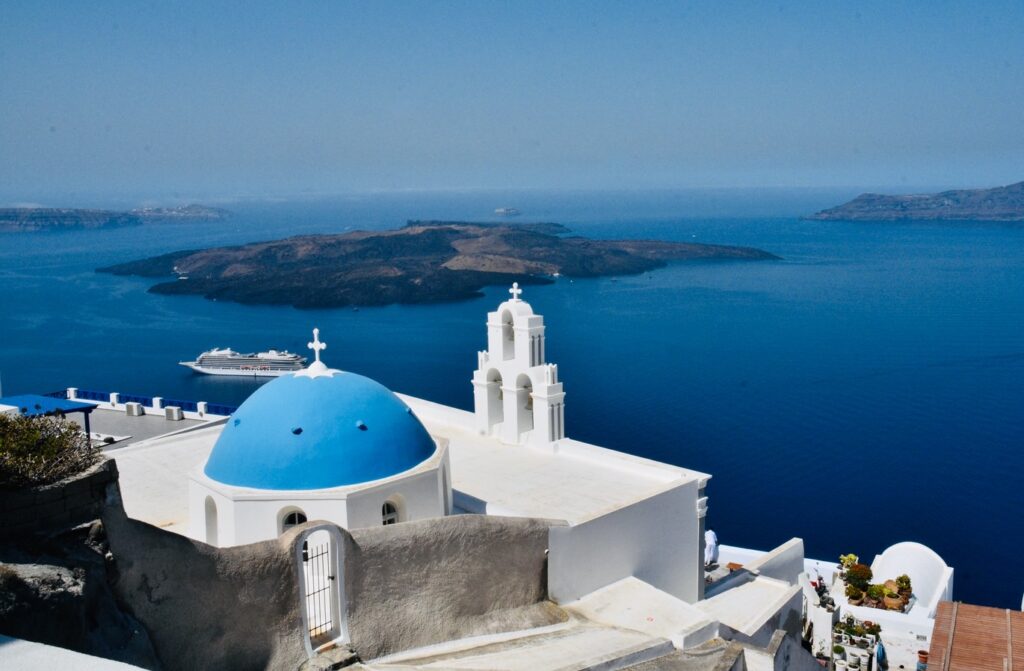
Across the island lies the village of Imerovigli, known for its well-preserved Greek Orthodox churches that have survived centuries of volcanic and seismic activity. Nearly all churches in Santorini are small and are usually maintained by a single family; their distinctive white and blue colors date back to a conflict between the Orthodox and Catholic Churches, during which Orthodox families painted their dwellings white and blue (the traditional colors of Greece.)
Catholic homes were painted yellow (the color of the Vatican and the Pope). The oldest of the churches in Imerovigli was built around 1650.
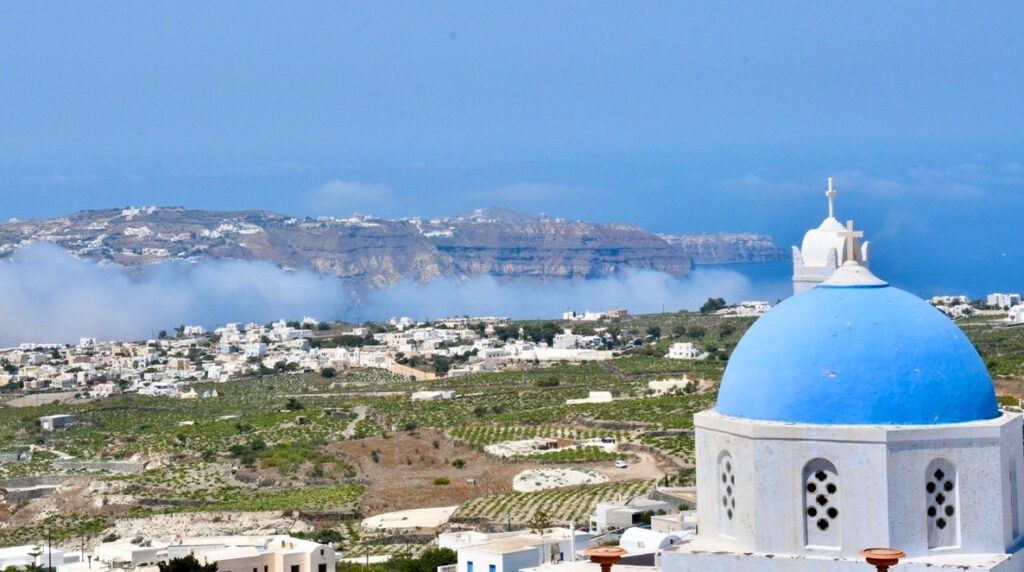
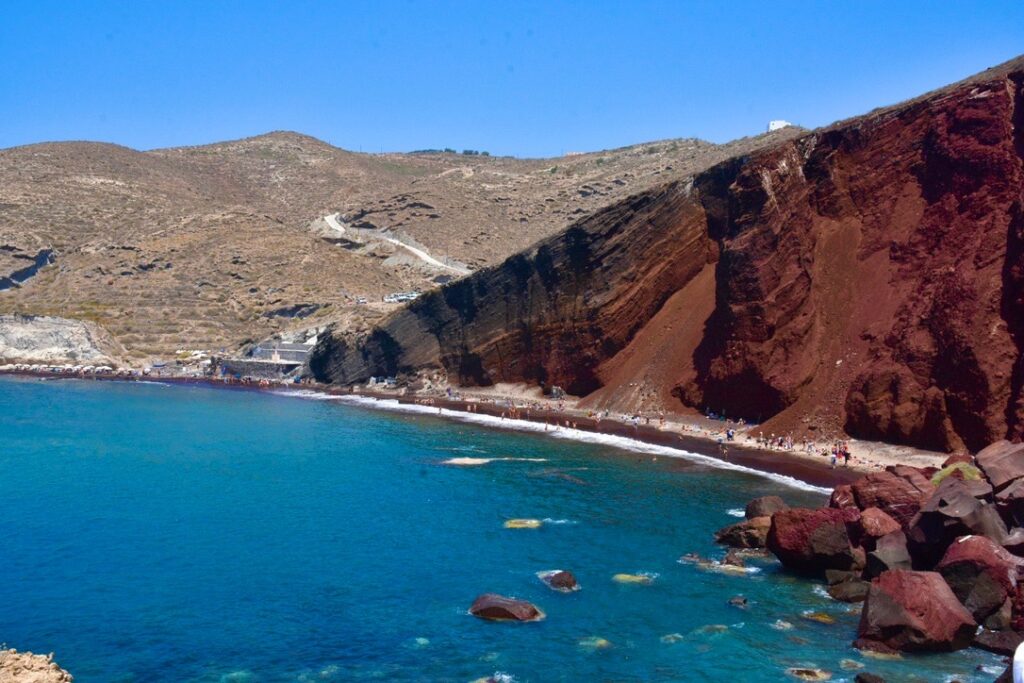
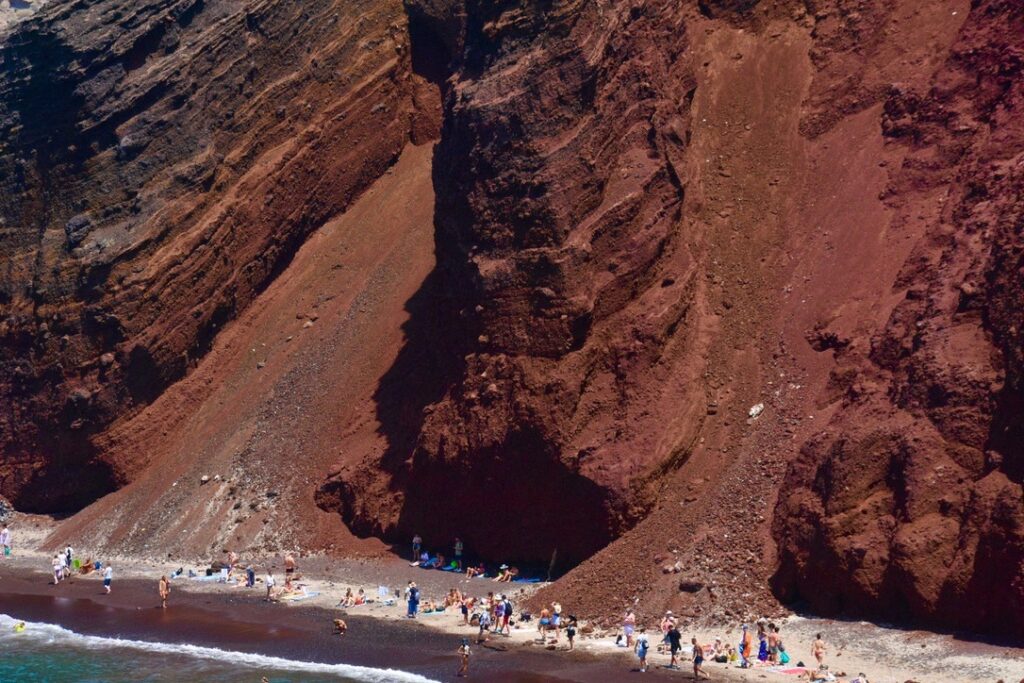
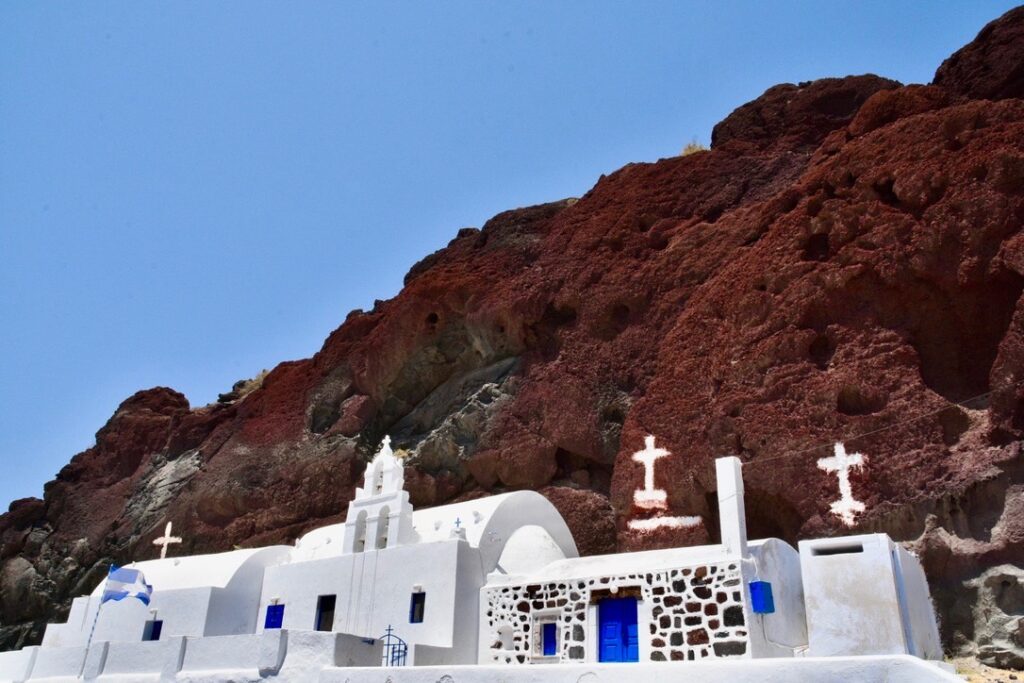
Our final stop was the archaeological site of Akrotiri, the remains of a mysterious Bronze Age settlement that dates back over 3,700 years. Like Pompeii in Italy, the city was destroyed in a volcanic eruption that buried the city under many feet of ash. The city was rediscovered in 1967, and only a small portion of it has thus far been excavated.
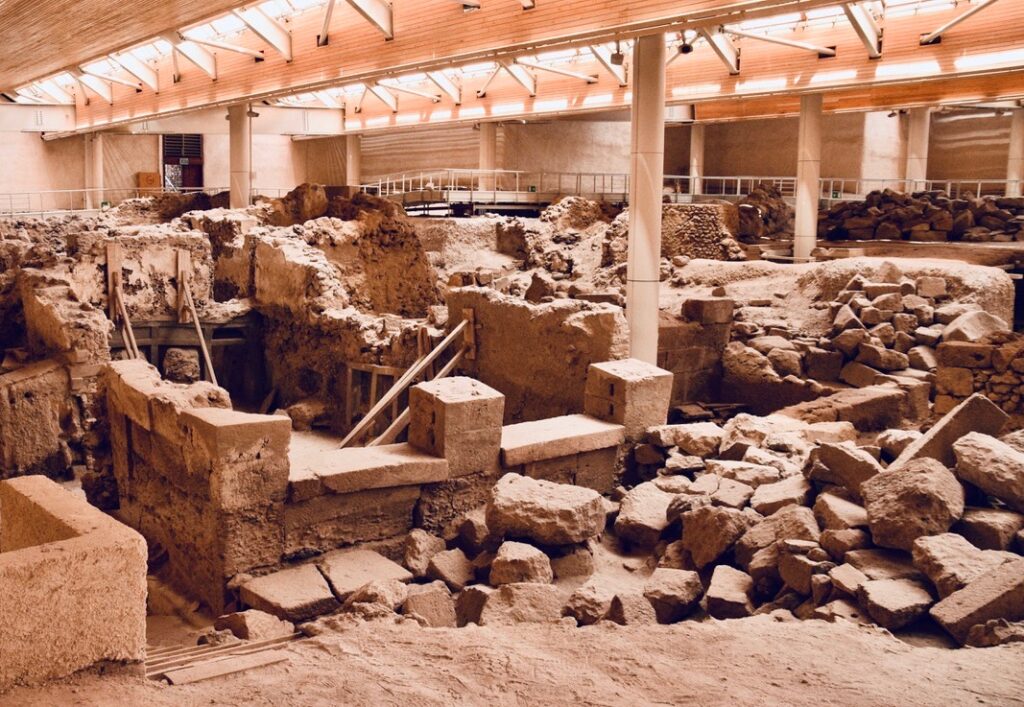
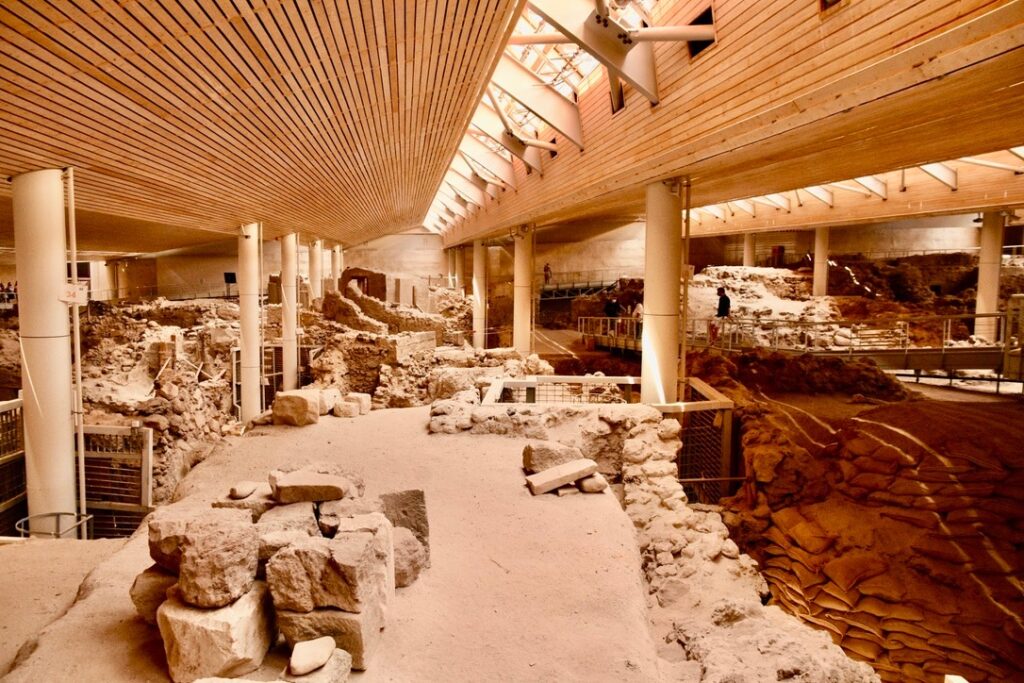
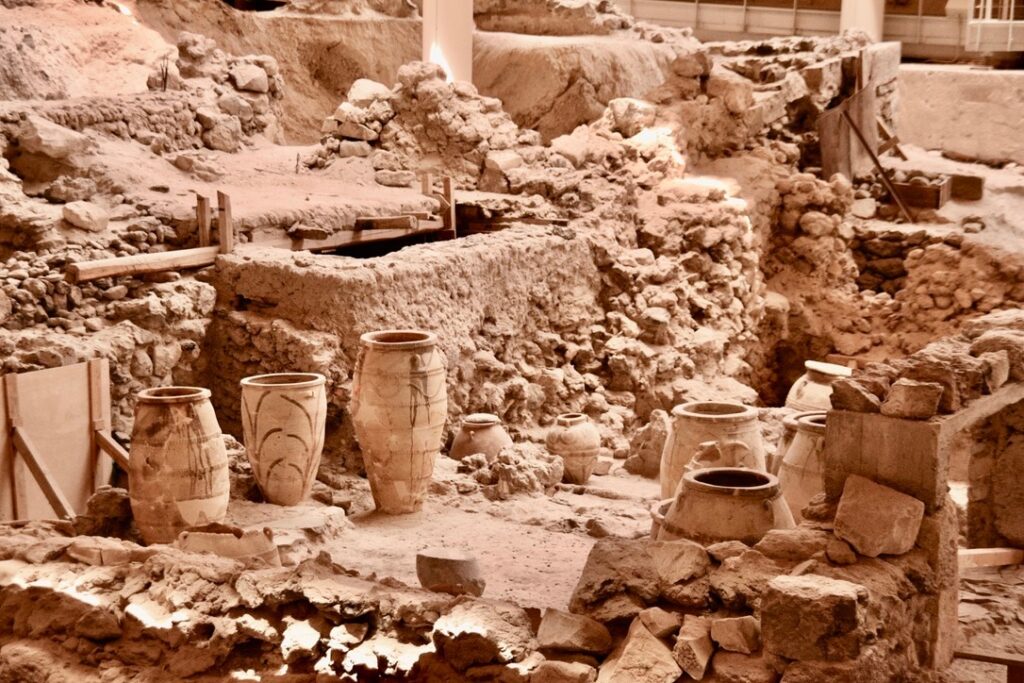
Akrotiri is a modern name; the actual names of the ancient city and the people that built it have been lost to time. Tickets can be purchased at the gate. If you prefer to buy in advance, buy them here.
What is known is that the builders of Akrotiri were remarkably advanced. They constructed elaborately decorated stone buildings three or four stories high, with indoor plumbing and a sophisticated sewer system. They covered the walls of their homes with brightly colored frescoes and constructed beautifully carved wooden furniture.
Goods from faraway lands and paintings of exotic animals, including monkeys, were found in the wreckage, showing that the residents of Akrotiri were well-traveled people who had visited Egypt, Syria, Cyprus, and even Sub-Saharan Africa.
These displays of wealth, coupled with paintings found in the ruins showing ships and sea voyages, indicate that the ancient inhabitants of Akrotiri were skilled mariners and prosperous merchants; the fact that the city had no defensive walls shows that they were at peace with the other societies of the Mediterranean.
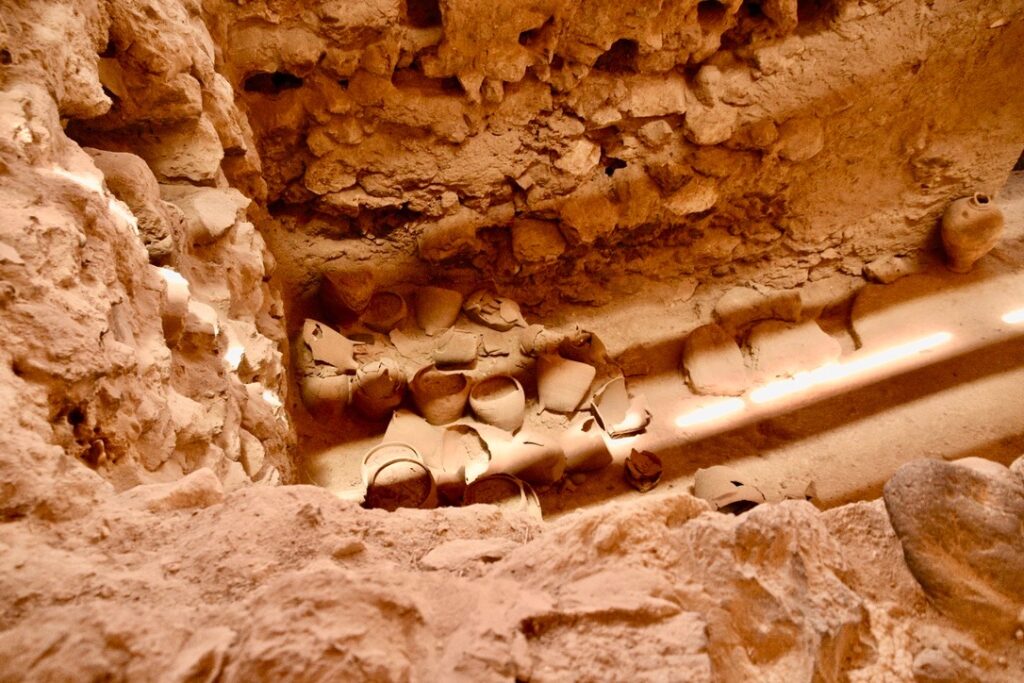
Though countless structures, artifacts, and works of art produced by these people have been unearthed, no skeletons or other human remains have ever been found in the ruins. Nobody truly knows what happened to the merchants of Akrotiri, although the leading theory is that they were killed in an attempt to evacuate the island by sea when their boats were destroyed by the 600-foot tall tsunamis created by the eruption.
Looking for more inspiration in Greece? Visit our Greece collection.
Have more time to explore Greece? Check out our 7-Day Greece Vacation article.
Looking for more travel ideas? Visit our Travel Tips and Destinations collections.
Happy traveling!
The Passporter Team
